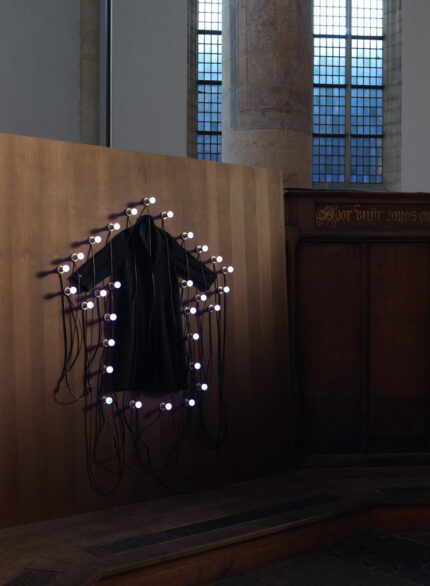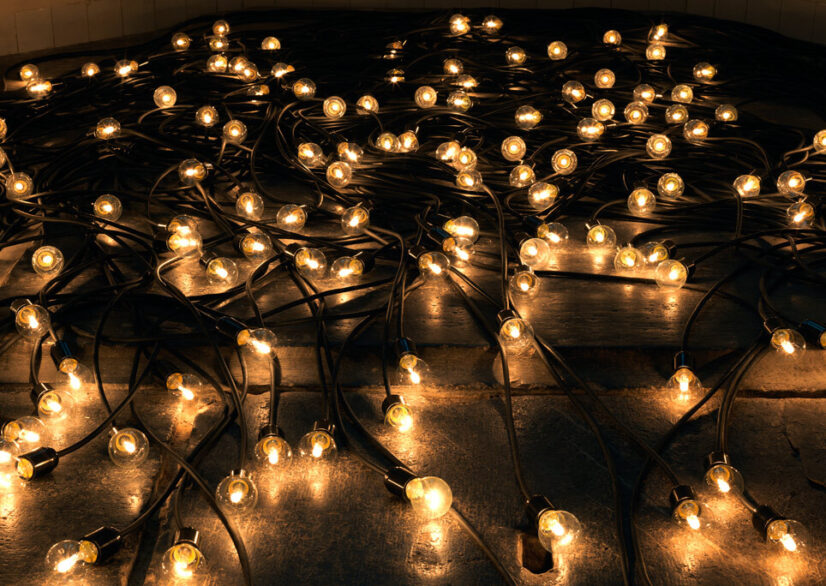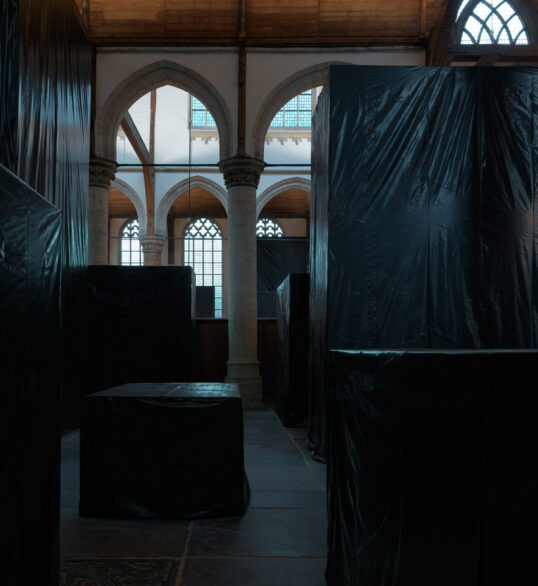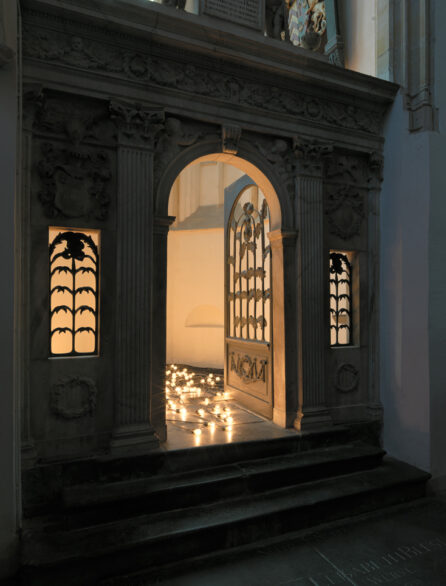







During the Amsterdam Art Weekend (23-26 November 2017), the Oude Kerk has invited world-renowned curator Hans Ulrich Obrist to talk to Christian Boltanski about his work and exhibition at the Oude Kerk.
Also see

What's on -
Hover for exhibition details
This winter, Christian Boltanski is creating a new composition for the Oude Kerk. He is using the entire church and deploying several monumental installations on the theme of what will come after our life has come to an end (After). On the gravestone floor, the artist designed a labyrinth of tombs suspended above the graves, creating new perspectives and an architectural layer that emphasizes our predecessors.
Interactive installation
You can contribute to the exhibition. In a contemporary confessional chair you can whisper a number of names of people buried in the Oude Kerk. A recording of the whispers will be played during the following weeks in the choir. Over time, all of the whispers will be turned into a comprehensive soundscape that remains as an intangible part of the Oude Kerk. Boltanski considers his work repeatable, like musical compositions are re-enacted time after time, even after the composer is no longer alive.
About Christian Boltanski
Fascinated by collective memory, transience and the passing of time, Christian Boltanski (Paris, 1944) developed an impressive collection of sculptures, films and installations that deal with these subjects, either directly or indirectly. Boltanski very often uses found items, like in No Man’s Land (Drill Hall, New York 2010), an enormous mountain of worn clothes with the soundtrack of thousands of human beating hearts in the background, that accentuate the anonymity and destiny of human existence. Boltanski created Les Archives du Coeur, an auditory collection of human heartbeats in Naoshima (Japan), and he created various pieces for the Biennial in Venice, like the installation Chance in 2011, and received numerous national and international awards for his oeuvre. His work is part of the collection of the most prominent museums, among which, The Museum of Modern Art, New York, The Tate Collection, London and in the Netherlands de Pont, Tilburg.
Public programme
The early morning concert series Silence makes musical connections with the work of Boltanski on conceptual and spatial levels. Music curator Jacob Lekkerkerker collaborates with composer Frank Krawczyk (1969). Together with Krawczyk and Jean Kalman, Boltanski made a collective opera, this spring in Bologna. An online and offline programme focuses on how we commemorate in our digital age; what happens online after death? Does our profile outlive us?

